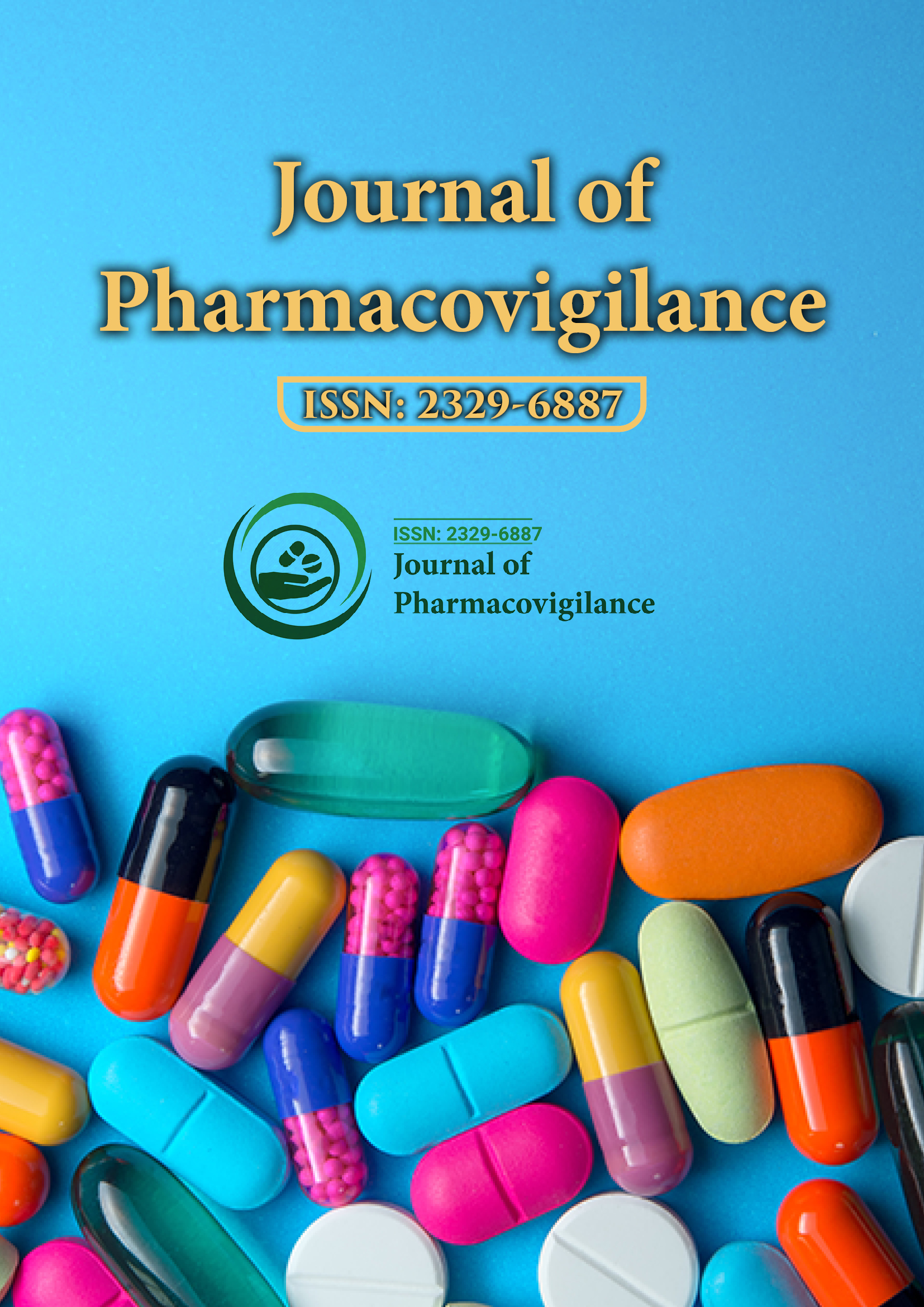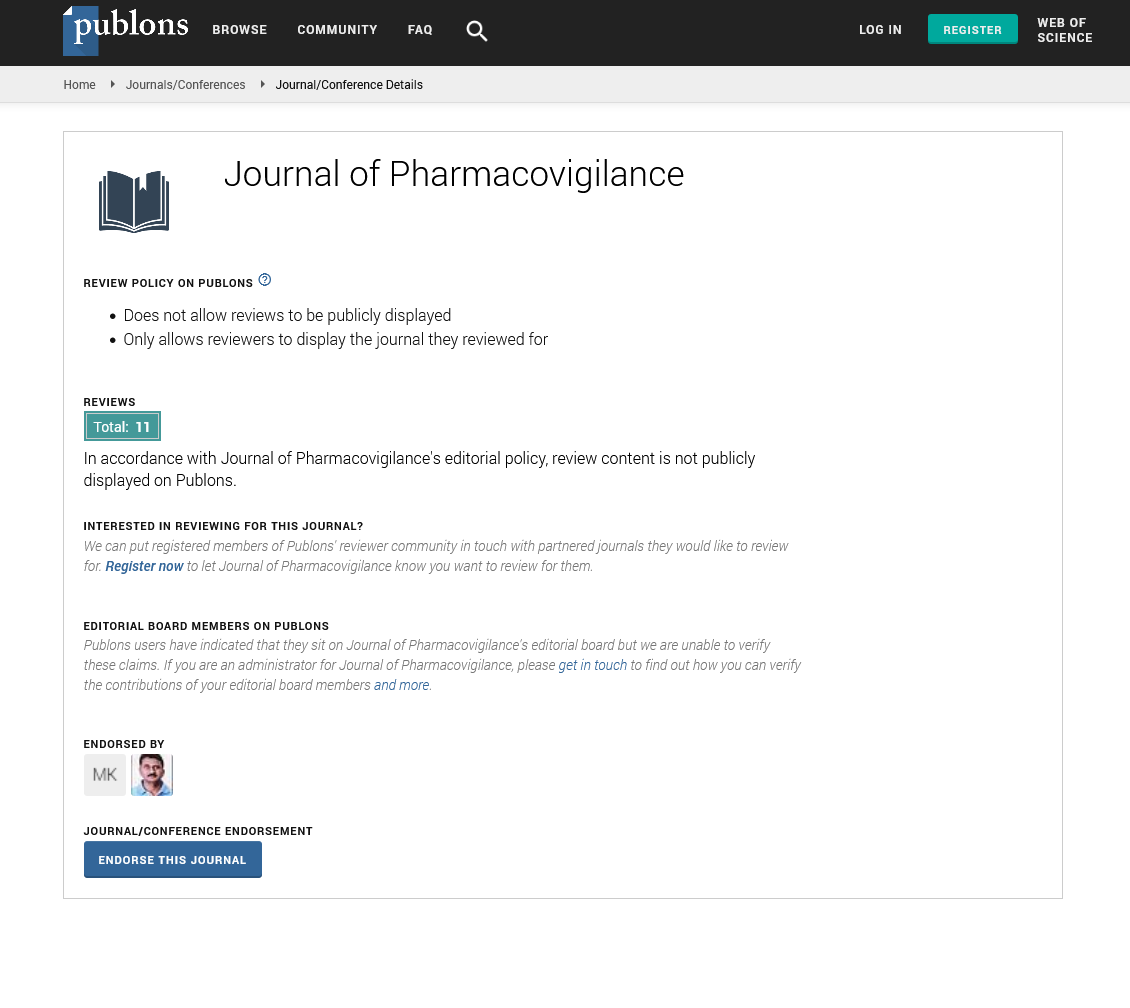Indexed In
- Open J Gate
- JournalTOCs
- The Global Impact Factor (GIF)
- RefSeek
- Hamdard University
- EBSCO A-Z
- OCLC- WorldCat
- Publons
- Euro Pub
- Google Scholar
Useful Links
Share This Page
Journal Flyer

Open Access Journals
- Agri and Aquaculture
- Biochemistry
- Bioinformatics & Systems Biology
- Business & Management
- Chemistry
- Clinical Sciences
- Engineering
- Food & Nutrition
- General Science
- Genetics & Molecular Biology
- Immunology & Microbiology
- Medical Sciences
- Neuroscience & Psychology
- Nursing & Health Care
- Pharmaceutical Sciences
Commentary - (2024) Volume 12, Issue 1
Unique Considerations of Pharmacovigilance in Pediatric and Geriatric Populations
Stephanie Sibley*Received: 29-Feb-2024, Manuscript No. JP-24-25627; Editor assigned: 01-Mar-2024, Pre QC No. JP-24-25627(PQ); Reviewed: 15-Mar-2024, QC No. JP-24-25627; Revised: 22-Mar-2024, Manuscript No. JP-24-25627(R); Published: 29-Mar-2024, DOI: 10.35248/2329-6887.24.12.474
About the Study
Pharmacovigilance, the science of monitoring and evaluating drug safety, is a fundamental of ensuring optimal patient outcomes. However, the success of these practices hinges on recognizing the distinct physiological and developmental characteristics of different age groups. Children and older adults present unique challenges in pharmacovigilance, necessitating specialized approaches to guarantee their safety when using medications.
Pediatric pharmacovigilance: Mitigating risks in a developing system
Children are not simply miniature adults; their bodies are undergoing rapid growth and maturation, leading to significant differences in drug metabolism, distribution, and elimination compared to adults. These variations can translate into unforeseen effects or increased susceptibility to Adverse Drug Reactions (ADRs).
Ethical considerations often restrict the inclusion of children in clinical trials. This data on pediatric drug safety necessitates reliance on "off-label" use of medications, where safety profiles are less established.
Young children are frequently unable to articulate their experiences with medications. Consequently, the onus of reporting ADRs falls on caregivers, who might lack awareness of potential side effects or struggle to recognize subtle reactions.
Developing age-appropriate formulations is important in pediatrics. Factors like palatability, swallowing ability, and accurate dosing require careful consideration. Inappropriate administration or manipulation of medications (e.g., crushing tablets) can significantly increase the risk of ADRs.
Enhancing pediatric pharmacovigilance strategies
Promote participation in well-designed pediatric clinical trials. Ethical considerations should be balanced with the need for strong safety data in children.
• These tools should be user-friendly and facilitate reporting by both healthcare professionals and caregivers.
• Invest in research on pediatric drug metabolism and pharmacokinetics. A deeper understanding of how children process medications is essential for optimizing drug safety.
• Promote education and awareness among healthcare professionals and caregivers regarding ADRs in children. Educational initiatives can equip them to identify and report potential side effects effectively.
Navigating polypharmacy and age-related vulnerabilities
Older adults represent another population with unique pharmacovigilance considerations. Age-related physiological changes, such as decreased kidney function and altered drug metabolism, can significantly influence drug response and escalate the risk of ADRs. Additionally, polypharmacy, the concurrent use of multiple medications, is prevalent among geriatric patients, potentially leading to complex drug interactions and unforeseen adverse effects.
• Age-related changes and polypharmacy can lead to a heightened susceptibility to ADRs. These reactions often present with non-specific symptoms that can be mistaken for underlying medical conditions, further complicating diagnosis.
• Cognitive decline in some elderly patients can hinder medication adherence and make it difficult for them to recognize or report ADRs.
• Fear of medication discontinuation or reluctance to burden healthcare professionals may lead to under-reporting of ADRs in the elderly population.
• Optimizing geriatric pharmacovigilance practices.
• Developing medication deprescribing guidelines to identify and discontinue unnecessary medications, thereby reducing the risk of polypharmacy-related ADRs.
• Promoting medication reconciliation during hospital admissions and clinic visits. Medication reconciliation ensures accuracy in medication lists, identifies potential interactions, and optimizes drug regimens.
• Physiological changes necessitate adjustments in medication dosage to account for reduced kidney or liver function in older adults.
• Enhancing communication between healthcare professionals, caregivers, and geriatric patients. Effective communication encourages better medication adherence, facilitates timely ADR reporting, and empowers patients to participate actively in their healthcare decisions.
Conclusion
By acknowledging the unique challenges faced in pediatric and geriatric pharmacovigilance, we can implement customized strategies to ensure the safe and effective use of medications in these vulnerable populations. Continuous research on agespecific drug metabolism, improved reporting systems, and enhanced communication are all vital for safeguarding the wellbeing of children and older adults. By adopting a vigilant and age-appropriate approach to pharmacovigilance, we can create a healthcare environment where all patients, regardless of age, can benefit from the life-saving potential of medications with minimized risk of adverse effects.
Citation: Sibley S (2024) Unique Considerations of Pharmacovigilance in Pediatric and Geriatric Populations. J Pharmacovigil. 12:474.
Copyright: © 2024 Sibley S. This is an open-access article distributed under the terms of the Creative Commons Attribution License, which permits unrestricted use, distribution, and reproduction in any medium, provided the original author and source are credited.

